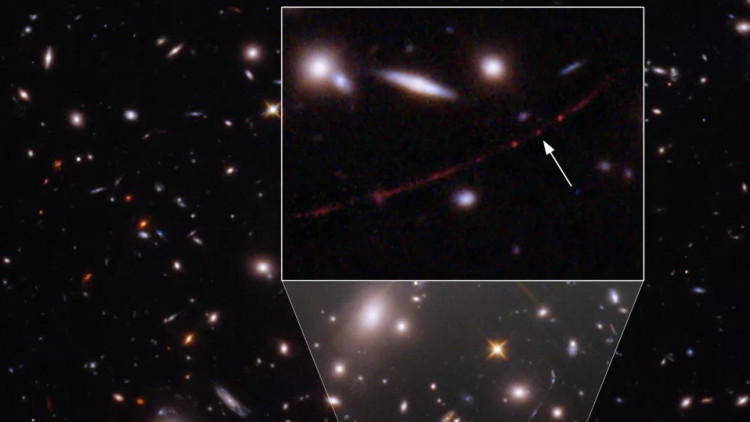A new study reveals that the most distant single star ever seen dates back to less than 1 billion years after the Big Bang, and may provide insight into the universe's earliest stars.
Earendel, whose scientific designation is WHL0137-LS, is at least 50 times the mass of the sun and millions of times as luminous, earning it the moniker "Earendel" from an Old English term meaning "morning star" or "rising light."
This newly discovered star, spotted by NASA's Hubble Space Telescope, is so far away that its light has taken 12.9 billion years to reach Earth, appearing to us as it did when the universe was just about 900 million years old, or roughly 7% of its present age. Until now, the universe's most distant single star, identified by Hubble in 2018, existed when it was roughly 4 billion years old, or 30% of its current age.
"This finding gives us an opportunity to study a star in detail in the early universe," study lead author Brian Welch, an astrophysicist at Johns Hopkins University in Baltimore, told Space.com.
Earendel was discovered thanks to WHL0137-08, a massive galaxy cluster located between Earth and the newly discovered star. The gravitational pull of this massive galaxy cluster twisted the fabric of space and time, resulting in a powerful natural magnifying glass that vastly magnified the light from faraway objects like Earendel behind the galaxy.
The light from the galaxy that hosts Earendel has been twisted by gravitational lensing into a lengthy crescent that researchers have termed the Sunrise Arc.
Many aspects of Earendel are unknown, including its mass, brightness, temperature, and kind. Scientists aren't sure if Earendel is one or two stars - most stars of Earendel's mass have a smaller, dimmer companion, and it's possible that Earendel is outshining its companion.
Scientists want to investigate Earendel's infrared light and pin down several of its properties using NASA's recently deployed James Webb Space Telescope. This knowledge, in turn, could throw light on the universe's initial stars, which originated before the universe was filled with the heavy elements created by succeeding generations of massive stars.
"With this lensed star, we can study its light independently," Welch said. "This lets us compare directly to stars in the Milky Way and look for differences which will improve our understanding of stars in the early universe."
The scientists detailed their findings in a paper published online in the journal Nature.





